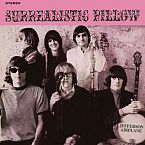White Rabbit

Songfacts®:
- This was written by Jefferson Airplane frontwoman Grace Slick, who based the lyrics on Lewis Carroll's 1865 children's book Alice In Wonderland (officially Alice's Adventures in Wonderland). Like many young musicians in San Francisco, Slick did a lot of drugs, and she saw a surfeit of drug references in Carroll's book, including the smoking caterpillar, the mushroom, and lots of other images that are pretty trippy. She noticed that many children's stories involve a substance of some kind that alters reality, and felt it was time to write a song about it.
- Slick got the idea for this song after taking LSD and spending hours listening to the Miles Davis album Sketches Of Spain, especially the opening track, "Concierto de Aranjuez." The Spanish beat she came up with was also influenced by Ravel's "Bolero."
- Slick wrote this song and performed it when she was in a band called The Great Society with her first husband, Jerry Slick. The Great Society made inroads in the San Francisco music scene, but released just one single, "Somebody To Love" (written by their guitarist, Jerry's brother Darby Slick), before calling it quits in 1966. Grace moved on to Jefferson Airplane, and the group recorded both "White Rabbit" and "Somebody To Love" for their first album with her, Surrealistic Pillow. The songs were the breakout hits for the band, with "Somebody To Love" reaching #5 US and "White Rabbit" following at #8.
The Great Society version of "White Rabbit" was released in 1968 on an album called Conspicuous Only In Its Absence (credited to "The Great Society With Grace Slick"), a live recording of a show at The Matrix in San Francisco. This version runs 6:07 and meanders through four minutes of Indian stylings before Slick's vocals appear. The Airplane rendition is a tight 2:29 with a far more aggressive vocal from Slick. - Grace Slick was raised in a tony suburban household in Palo Alto, California, about 30 miles south of San Francisco. This being the 1950s, women were expected to conform to the norms and aspire to be housewives. Slick identified with Alice; moving to San Francisco and forming a rock band was her "rabbit hole" moment. When she joined Jefferson Airplane, that was another journey down the rabbit hole.
- The vocals don't come in until 28 seconds into this song, but once they do, they don't abate until the song is finished - there is no guitar solo or other break. This put the focus for those two minutes squarely on Slick, who developed very deliberate stage movements designed to keep her on her feet because she was rather clumsy. Any live improvisation came at the beginning of the song before she started singing.
-
- Slick claimed to Q that the song was aimed not at the young but their parents. She said: "They'd read us all these stories where you'd take some kind of chemical and have a great adventure. Alice in Wonderland is blatant; she gets literally high, too big for the room, while the caterpillar sits on a psychedelic mushroom smoking opium. In the Wizard of Oz, they land in a field of opium poppies, wake up and see this Emerald City. Peter Pan? Sprinkle some white dust-cocaine-on your head and you can fly."
- This was one of the defining songs of the 1967 "Summer Of Love." As young Americans protested the Vietnam War and experimented with drugs, "White Rabbit" often played in the background.
- The song begins in F-sharp minor, which Slick chose to suit her voice. The minor chords evoke a darkness and uncertainty as Alice finds herself in a strange world. In the "go ask Alice" part, it shifts to major chords to celebrate her courage and resourcefulness as she finds her way.
- The Alice character appealed to Slick because she wasn't the stereotypical damsel in distress. Alice follows her own path to satisfy her curiosity - even when things get sticky.
- Did the band ever get sick of this song? Grace Slick answered this question in a 1976 interview with Melody Maker when she replied: "I can play around with a song on stage without ruining it. We stopped doing 'White Rabbit' for a couple of years because we were getting bored with it. I like it again and we included it last year 'cause it was the year of the rabbit."
- The words "white rabbit" never show up in the lyric, but are alluded to in the lines:
And if you go chasing rabbits
And you know you're going to fall
In Alice In Wonderland, the first chapter is "Down the Rabbit-Hole." On the first page, the White Rabbit appears, leading Alice on her adventure. In 1971, Led Zeppelin released "Black Dog," another song with a color-animal title that doesn't appear in the lyric. - The Airplane were frequently found giving free concerts around the Haight-Ashbury area of San Francisco. They shared a large house with several musicians during the psychedelic '60s, often applying for and receiving parade permits to walk the streets. Grace Slick was always a radical thinker, rejecting "daddy's money." She once appeared on The Smothers Brothers Comedy Hour made up in blackface, causing a big controversy.
- The line in this song, "go ask Alice," provided the title of a 1971 book published by an anonymous author. The book was a "diary" of a young girl in the 1960s who had a drug addiction and died. Her name is never given, and the diary is suspected to be fictional despite being promoted as true. The anonymous author is likely Beatrice Sparks, the book's editor.
- According to Slick, there were always people who misinterpreted this song, despite her best efforts to get the lyrics across. In the book Anatomy of a Song, published in 2016, she said: "I always felt like a good-looking schoolteacher singing 'White Rabbit.' I'd sing the words slowly and precisely, so the people who needed to hear them wouldn't miss the point. But they did. To this day, I don't think most people realize the song was aimed at parents who drank and told their kids not to do drugs. I felt they were full of s--t, but to write a good song, you need a few more words than that."
- This capped off Jefferson Airplane's set at Woodstock in 1969. They took the stage at 8 a.m. on the second day (or, depending how you look at it, third morning), following a performance by The Who that started at 5 a.m.
- According to Grace Slick's autobiography, the album name came when bandmate Marty Balin played the finished studio tapes to Jerry Garcia of The Grateful Dead, whose first reaction was, "Sounds like a surrealistic pillow." Slick says that she loves the fact that the phrase Surrealistic Pillow "leaves the interpretation up to the beholder. Asleep or awake on the pillow? Dreaming? Making love? The adjective 'Surrealistic' leaves the picture wide open."
- "White Rabbit" is a mainstay in the stage productions of The Blue Man Group, and appears on their 2003 album The Complex. Music is a big part of the show, which features three blue guys engaging the audience with a combination of comedy, percussion, and sloppy stunts. They got a lot of attention when they were used in ads for Intel.
In the context of their 2003 production, the song ties in with a central theme: how the internet changes the way we interact. "The surreal Alice In Wonderland imagery still resonates in our internet era where people routinely travel down the rabbit hole of the World Wide Web," they explained. "It always seems like a good idea until you have a 'bad trip.'" - Grace Slick wrote this song on an old upright piano. Some of the keys in the upper register were missing, but she didn't use those anyway.
"I wrote White Rabbit on a red upright piano that cost me about $50," she Tweeted in 2022. "It had eight or 10 keys missing, but that was OK because I could hear in my head the notes that weren't there." - This song is heard multiple times in the movie The Game with Michael Douglas. It demonstrates the madness Douglas feels as he is being manipulated by forces he can't control. >>Suggestion credit:
Nathan - Brugge, Belgium - In the film Fear and Loathing in Las Vegas, there is a scene where Dr. Gonzo is in a bathtub and this song is playing on a tape player. In an effort to end his life, Gonzo implores Raoul Duke to put the tape player in the tub "When White Rabbit peaks." Instead of doing as instructed, Duke throws a grapefruit at Gonzo and unplugs the tape player. >>Suggestion credit:
Justin - Durango, CO - This was used as the theme song for a 1973 movie called Go Ask Alice.
- On November 7, 1967, the St. Louis radio station made a bold move, switching from an easy listening format to "real rock radio." The first song they played after the switch was "White Rabbit," a clear signal that they were aligning themselves with the counterculture. The song was apropos, as they abandoned their reliable conservative audience to go down the rabbit hole, bringing the movement to the midwest.
The format stuck. KSHE became a vital and transgressive voice, breaking new bands, sometimes letting music play for hours on end without interruption, and doing segments devoted entirely to women in rock (their "American Woman" series). - Recalling the song in a 2016 Wall Street Journal interview, Slick said: "Looking back, I think 'White Rabbit' is a very good song... My only complaint is that the lyrics could have been stronger. If I had done it right, more people would have been annoyed."
- The UK version of the album didn't include this track.
- This was used in the first episode of Stranger Things, "The Vanishing Of Will Byers." It plays as Eleven flees Benny's diner.
- There are no pills mentioned in Alice's Adventures In Wonderland, despite this song's opening lines:
One pill makes you larger
And one pill makes you small
Alice drank from a bottle labelled "Drink Me" to shrink, then ate cake labelled "Eat Me" to grow. But thanks to this song, many assumed Alice took pills at some point, and in the 1999 movie The Matrix, there's a famous scene where Morpheus offers Neo a choice of red or blue pills, telling him the blue one will return him to his state of contented ignorance, and the red one will expose him to the truth. "You take the red pill, you stay in Wonderland, and I show you how deep the rabbit hole goes," he says, making reference to the book.
The song is not used in the movie but does play in the fourth installment of the franchise, The Matrix Resurrections (2021).
- More songs from Jefferson Airplane
- More songs with animals in the title
- More songs inspired by books
- More songs with colors in the title
- More songs about drugs
- More songs used in movies
- More songs performed at Woodstock
- More songs inspired by Alice In Wonderland and Through the Looking Glass
- More songs that are discussed in movies
- More songs with literary characters in the title
- More songs with titles that are not part of the lyrics
- More songs used in TV shows
- More songs used in Stranger Things
- More songs from 1967
- Lyrics to White Rabbit
- Jefferson Airplane Artistfacts
Comments: 98
- Surreal from Tempe AzJackie, Marion and Anonymous: the lyric is NOT "keep" your head, it's feed your head. Grace Slick herself has talked about it on more than one occasion and if anyone would know, it's the writer of the song. Where do you people come up with these weird ideas?
- Juanna Bee from LagrangeOtter rabbit owner. "Max" really likes Jefferson Airplane!
- Egg from IdahoIt's very clearly "feed your head." Grace Slick: "The line 'feed your head' is about reading, as well as psychedelics feed your head by paying attention: read some books, pay attention."
- John Harrold from Aurora Illinois"Keep your head"? Seriously? I have to think that the Art Linkletter's daughter comment is a joke. At least I hope so.
- Rob H. from East TexasInteresting that is sung with such confidence. A very forceful assertion about an unreal world. You would expect a song about hallucinogens to be sort of hazy and disorganized. The words are fanciful but the music has military drums and tension. It's a strong assertion of a new age - America was not going to be a country of crew cuts anymore.
- AnonymousThe correct lyric is “Keep your Head”
- Marion from Boise"Keep your head" Keep as in k-e-e-p. If you were familiar with the Alice story images mentioned, you would get it! The door mouse hinted to Alice that she should be mindful of her head as the queen would always shout at any provocation, "Off with her head!" Readers really should take the time to delve into the imagery a bit, read, yes, I said read Alice in Wonderland and Through the Looking Glass (two separate stories). Feed your head? Seriously?
- Jake from Burke, VaWhite Rabbit is written in the style of Alice In Wonderland, but it has to do with all that drug paraphernalia of the psychadelic era.
- Barry from Sauquoit, NyOn June 3rd 1967, the Jefferson Airplane performed "White Rabbit" on the ABC-TV program 'American Bandstand'....
Fifteen days later on June 18th it entered Billboard's Hot Top 100 chart at position #50; and on July 23rd it peaked at #8 (for 2 weeks) and spent 10 weeks on the Top 100...
The week "White Rabbit" entered the Top 100, their preceding release, "Somebody To Love", was at #7 on the chart, the week before it had peaked at #5...
The group had two other records make the Top 100 in 1967; "The Ballad of You and Me and Pooneil" (peaked at #42) and "Watch Her Ride (reached #61). - Rocky from Fort Smith, ArThis song still sends chills thru me & I still love it. First hear it on radio when I was an undergrad at Univ. of Kansas. There were so many things going on that year like the Summer of Love, anti-war marches & demonstrations, the Vietnam War, the hippies, changes in rock music & the rock culture. The Airplane was in the thick of it all. Loved their "in your face" attitude back then. Loved Grace Slick. And I could never get over the fact that on some radio stations some songs with drug references couldn't get played, yet "White Rabbit" was known by all the rockers to have blatant drug references. That haunting guitar intro & that Spanish accentuation hypnotized many of us "baby boomers" of the Sixties to get up & come inside their secret, mysterious incense-filled "head shop "
- Karen from Manchester, NhOn the television show, "Once Upon a Time" (a show about characters from children's stories and fairy tales being cursed by being sent & trapped in a small Maine town in modern time), the character of the Mad Hatter's modern name is Jefferson. It took me a while to get it. (other great pun names were Cinderella = Ashley, Rumpelstiltskin = Mr. Gold, Little Red Riding Hood = Ruby)
- Michael from Bloomington, IlWhite Rabbit was also featured on the TV series Warehouse 13 titled 'Duped' which was about the 'magical' looking glass artifact.
- Bmn from Hisuan, Argentinaedit fix:
this song was recently used in Fringe. Series 04 episode 15 ( s04e15 - Walter in the lab / Walters lab).
http://www.tvrage.com/Fringe/episodes/1065147346 - Bmn from Hisuan, Argentinathis song was recently used in Fringe. Series 04 episode 15 (s05e15).
http://www.tvrage.com/Fringe/episodes/1065147346 - Ryan from River Vale, Njone of my favorite songs that is built entirely around an unusual chord progression. "White Rabbit" is a great example of a song that features an "all Major" chord progression (F# <--> G --> A --> C --> D --> A, from the Intro until the Bridge... then E <--> A --> F# <--> G --> .... and repeats the first progression until the end).
I think it's very interesting, and maybe a little ironic, how "dark" and "ominous" sounding this song is, despite the fact that it's constructed entirely with Major chords.
Not an "unheard-of" cp, but quite unusual by most standards... 2 other examples of the "all Major" cp: "I Am the Walrus" (Beatles), "Everything in it's Right Place" (Radiohead) - Bob from Schenectady, NyThis is the background music for the menu screens in the video game Battlefield Vietnam. (EA)
- Carli from Pheonix, AzI like the Blue Man Group version better
- Shawn from Green Bay, WiThis is one of those unique, epic, all time great songs. I could not care less if it was about drugs or not. In fact, to me, the lyrics are completely secondary to the power of the song. The song is unique because of it brevity, and the fact that it builds in intensity and speed all the way to a blowing crescendo. Fabulous! If this piece can't get your blood going, than no music can.
- Kathryn from Reynoldsburg, OhFirst off let's clarify a bit here.
Lewis Carroll was a pen name for the Reverad Charles Lutwig Dodgeson who was a mathmatics professor at Oxford. The dean at the time was Dean Liddel (it sounds like fiddle) and Dean Liddel had three daughters one of which was Alice. Alice was six at the time when he was much older. He and a friend took the girls on a boat ride one sunny day and they asked him to tell him a story and so he came up with Alice's Adventures Underground which was he original title of the first book. When he went to publish it he added two chapters and the original illistrations were done by himself. The first copy went to Alice Liddel and it was red with a rabbit on the cover. She had the book until she sold it in an auction after the end of the 19th century. Charles didn't not have a sexual attraction to any of the children. He hated boys and thought of girls in a purity sense. He never molested them. He took pictures (with their parents permission) of some of the children naked but if you look into it it was a trend for artists at the time to draw off of children's nude photographs. He later gave the photos back to the children or burned them as to keep them from embaressment. Charles never did drugs. Check your sources and facts people! - Dennis from Toronto, OnFly Jefferson Airplane gets you there on time. I am amazed at all you young people respecting the Grace. by the way the Original book was published as "Through the Looking Glass" the second book "What She Found" I know I own one of the original 50 recalled printings. Lewis Carrol smoked Opium which I have tried many many years ago. Instead of writing trip out books I slept in the bath tub. By the way the white stuff on hash is not Opium but mold. Opium is jet black hard, very sweet and you should never touch it. I met Grace at the Okeefe Centre in Toronto, believe what you like, Opium not LSD opens the door. I get flash backs looking at the cover, and still have a crush on Grace, which my Wife has learned to accept.
- Sage from Waterville, OhThe book is widely rumored to be about Art Linkletter's daughter, and is a true story.
- Mike from Matawan, NjYes...'White Rabbit', great song.....especially as used in "Fear and Loathing in Las Vegas". How about putting some HOT TUNA on this board? May as well put all of 'Burgers' on for a start.
- Dirk from Waukegan, IlDude checkn out the music video, it's soooooo trippy!!!
- Billy from West Unity, OhI find it interesting that when all songs with any type of drug referance were banned from the radio this one STILL got air play. Perhaps it was something in the kool aid.......................
- Theresa from Murfreesboro, TnGrace Slick has the best rock voice, one of my favorite songs of all-time.
- Sean from Piscataway, Nji really belive that the 60s generation is reapearing in todays teens i am 17 years old and very influenced by song just like these but this being my favorite i love to trip and just listen to music with friends for some reason i really think i was alive in the 60s lol
- Linc from Beaumont, TxThis song is also used in Fear and Loathing in Las Vegas (1998) when Dr. Gonzo ODs in the bathtub and Hunter pretends to throw the tape player in the tub. It stars Johnny Depp as Hunter S Thompson and Benicio del Toro as Dr. Gonzo, cast includes: Christina Ricci, Toby Maquire, Cameron Diaz and Gary Busey
- Oldpink from New Castle, InDefinitely one of the most psychedelic songs ever.
A very little known song that is even more that way is the Pink Floyd song "Cirrus Minor."
Check it out. - Jay from Brooklyn, NyThe hookah-smoking caterpillar of "Alice in Wonderland" is obviously a reference to the opium use common in Victorian England, but the Mad Hatter has nothing to do with drugs. At the time "Alice" was written, hatters used mercury to help process cloth. Prolonged exposure to mercury causes brain damage, which people believed was madness. The Mad Hatter character is an exaggeration of this insanity, and the whole Mad Tea Party is a parody of Victorian manners. The Mad Hatter is not tripping on drugs; he is maddened by mercury. Here, and elsewhere in the Alice books, Lewis Carroll (a mathematician and logician) uses a bizarre backwards-twisting logic to make the ridiculous seem real and the real seem ridiculous. He is not writing about drugs; he is having fun with illogic.
To Spencer in Los Angeles: There is no evidence the Lewis Carroll was a child molester. He may have had some pedophilic tendencies, but maybe not. He was a photographer when it was a rather new art form, and took nude artistic pictures of young girls. From what I have read, this was always done with parents in the room and was not sexual in any way. It seems odd to our jaded eyes that a man taking such pictures could be doing it for purely artistic reasons, but it did not raise any alarms in Carroll's time. We cannot know what thoughts were in Carroll's mind as he took these pictures, but since people willing allowed their daughters to be photographed, Carroll's contemporaries must have trusted him. - Blake from Tahlequah, OkThis song is also used in "platoon" a great movie and a great song
- Eddy from Miami, Fli like this song... it's very creative to write down psychedelic songs. i wrote my first psychedelic song and it came out awesome and at the same time very strange. i read the book "go ask alice" and when your reading the book it feels like your living in the 60's.. it's very bizzare. white rabbit is really bizzare and once you hear it, it changes your aspect about the descent life a person is living. i took lsd and marijuana. and it changed my life. but i don't take them anymore. but still have some good old flash backs.. jefferson airplane supported the hippie culture and made them get turned on by their songs. most of the songs of jefferson airplane are just zoned out when you here them. it's like your living in the 60's all over again. by the way im 16 years old.
- Naioka from Sptsyltuckey, Vaoh, I also have something else to say.
None of you can REALLY determine what a book is about. Only an author can say what their book is REALLY about. Lewis Carrol may have written Alice's Adventures In Wonderland about drugs, or maybe he didn't. It's not exactly up to us to define it. You can say what it means to you, but you have know idea what it might have meant to him. - Naioka from Sptsyltuckey, VaThis is a good song. The booko it was based on was amazing and amazingly trippy (who needs drugs when you can just read something by Lewis Carrol?) And the book that was titled after it was also excellent.
- Allison from A Little Ol' Town In, MiThis is a wonderfully written song. Grace's voice is very well displayed and I've caught myself attempting to imitate her more then once. AWESOME SONG
- Norlyn from Geneva, IlMy #1 song of all time, with only Steppenwolf's Magic Carpet and Hendrix's All Along the Watchtower coming close.
- Paulus_2 from Het Gooi, NetherlandsThe song is a soundtrack in Peter Fonda and Dennis Hopper's movie "Easy Rider". The film itself is a kind of trip. So this song fits quite well.
- Blair from Winipeg, MbGrace Slick rocks. this song was in the movie the game( a remake of dial M for murder), where Michael Douglas comes home to find that some one gave his mansion a pycadelic makeover. One little thing the mad hatter was mad becuase of the chemicals used to strip rabbit hides. sadley Grace wasn't w/ Jefferson starship when We built this city was released.
- Wayne from Crockett, TxGrace Slick has become a very proficient artist. Check her art here: http://www.frontrowgallery.com/slick/slick_art.html
- Lance from Malibu, CaThe song was influenced by the book and NOT the other way around. Yes, Lewis was on opium, but not everything has to be about drugs. The song is awesome but I got really sick of hearing it all last summer.
- Darren from Winnipeg, MbGrace Slick said many times that this was written in response to some who criticized rock and roll and interpreted songs as being about drugs, even if they weren't. Her basic idea was that if you want to see drug imagery, you can find in anywhere, even in children's stories.
- Stephanie from Edmonton, AbI heard this song on a commercial for the game "Lost Odyssey" and it buged me cause I was "I know that song" and I finally figured it out when I told my parents. I remembered they played it all throught my childhood and it was ingrained into my subconcious LOL
- Myra from Chicago, IlI've always thought that this song was written under the influence of drugs. Not that's it's a bad song. It's a kick-ass song.
- Renee from Pueblo, CoAs an official resident of the day and age of feeding one's head--The term "drug" went into applications way beyond the taking of substances. It was as easily applied to a person's relationship to society, other people, and our response to world-wide constraints to conform in order to receive the pleasures, prestiege, and general perks given to those who are willing to simply "go along" with the program. "Heady drugs" these are and few resist addiction. Can anyone tell me if it is true that a Gap store now stands on the corner of Haight-Ashbury. Can we all feed our head on a new pair of jeans?
- Andrew from Orlando, FlThe end of this song was sung by Nixon in an episode of Futurama. This song was also used in the Lost Odyssey commercial, which is a video game.
- Vanja from Novi Sad, SerbiaDon`t know any fact about song, but it`s great!!! It`s very funy, but really!100% hippy:)So maybe Alice really was on acid, who knows?! At least she and Grace Slick had fun! It`s all about drugs...
- Musicmama from New York, NyIt still astounds me that a band that could shine so brightly in a song like this could flare out in ignomy with something like "We Built This City."
- Musicmama from New York, NyTrue, Alice in Wonderland wasn't about drugs. But its author, Lewis Carroll, smoked opium, and one could argue that much of the imagery is based on what he saw. I think that in "Alice", Lewis showed us that a fable is really a product of an altered state of mind--a hallucination, if you will, or what the poet Arthur Rimbaud meant by "the derangement of the senses." That is the reason why, Michelle of San Diego, Disney could never do a movie that's truly based on the book!
I think this song has a similar theme to the one I've mentioned. The point is not whether Grace Slick or the other band members were doing LSD, pot, or any drugs at all. What matters is that they--and whether or not we--are willing to "feed our heads" and take the risk of seeing what we couldn't have seen before. I love the lyrics, Grace's singing and the chord progressions (even though I'm not a musician) on this track. - Tj from Chicago, IlThe only thing i have to say is its a really good song and there are way to many points on it got influenced or if alice and wonderland was drug influenced or not really who cares they are both cool as hell to trip on and leave it at that
- Mel!ssa from Pittsburgh, PaI read Go Ask Alice in HS. One of those books that should have educated not influenced me. Good book. Great song.
- Patrick from Bremen, GaThe story of Alice in Wonderland itself is not about drugs. The scenario Alice finds herself in was all a dream. She didn't consume any drugs before. She had just gotten drowsy from listening to her older sister reading to her.
Contrarywise (using a Lewis Carroll word here), the song can be seen to refer to drugs. Some drugs can produce the hallucination that you're falling, even though you're steady, or in a position where you cannot fall (sitting or lying down). Some drugs (legal and illegal) will mess up your equilibrium, making you feel like you're swaying one way or the other, or else like I said earlier, make you feel like you're falling. In the story, Alice falls down a deep hole that seems to go on forever when trying to catch the white rabbit. - Patrick from Bremen, GaWas used in the episode of "The Simpsons" when Homer learns more about his mother's past, and meets two hippies she hung out with, who run a veggie drink company. Homer decides to join them, and makes a batch of the product using veggies from their "special garden." The song plays as the people of Springfield consume the doped up batch, and begin hallucinating.
- Julia from Southern Cali, CaA "White Rabbit" remix was used for Resident Evil's latest movie "Extinction"
Alice = Mila - Lucy from Nowhereland, TnHoney, the name Jefferson Airplane was taken from the imaginary blues musician (I don't remember the name of the guy who made him up) "Blind Thomas Jefferson Airplane". Get your facts straight.
- Kate from Seattle, WaDiarm10: wikipedia is not a reliable source, and you may want to verify your facts, because if you argue it is not about drugs in any way, then how do you explain the caterpillars use of a hookah, and being atop of mushrooms, and also the Mad Hatter.
- Diarm10 from Carlow, IrelandAlice in wonderland isent influence by drugs as it was originally told told by a preacher to school girls on a boat trip in the mid 1800's to keep them occupied, honestly wikipedia it !
- Waribana from Brussels, BelgiumAs a matter of fact, Alice was the nickname of a guy who used to hang around at Ken Kesey's acid tests and who was utterly famous for his top quality acid.
- Madalyn from Greensburg, Papsychodelic...and fun...best jefferson airplane song...by far in my opinion....who knew it inspired a book?
- Ekristheh from Halath, United StatesAttn Ashley re Alice and her strange experiences: Go back and read the Lewis Carroll books again. In both stories, Alice is asleep and dreaming.
Rumor has it that "Feed your head" was a quote or paraphrase from a remark by Ted Kennedy, but I have no source on that. It may be nonsense, an attempt to insert meaning where none exists. - Ekristheh from Halath, United StatesI played this a great deal during my stint on community radio in the 80s and 90s. Sometimes I would spin it and croon into the microphone, "And now, our National Anthem."
- Ashley from Moncton, CanadaIf you argue that Alice In Wonderland isn't actually influenced by drugs (not the author, the story itself), you must at least accept that some strange things are going on with Alice. Now, Alice cannot be in the strange world she visits (which does seem rather trippy) without the help of some sort of substances unless she's insane, because no sober human vision can compare to the insanity of Alice's trip. Having said this, White Rabbit is an excellent summary.
- Mark from Lancaster, OhI read that Grace Slick was trained as an opera singer, and when I listen to the song, it seems quite probable that this is indeed the case. Last I heard, she was doing quite well and looks approximately half her age.
- Laura from Byston, AkTo the person that claims "just a lil fact so u all shud know...the Disney movie "Alice in Wonderland" is not fully based on Lewis Carrol's book titled Alice's Adventures in Wonderland but actually a mix of three books including: lewis carrols book, Charles Dodgson's Through The Looking Glass, and Timothy Leary's, Your Brain Is God. Scenes, ideas, and philosophies from the three books are intermixed throughout the film, making it quite a mind trip. PRETTY SWEEET HUH!?!
"
OK, so first, Charles Dodgson IS Lewis Carroll. Second, I'm highly doubting that the Disney version of Alice in Wonderland is based in any way on Timothy Leary's book, since Timothy Leary hadn't even written the book yet.
Also, the book Go Ask Alice is known to be a fake, written by Beatrice Sparks. Sparks wrote numerous morality tales claiming they were true. - Joe from Bethlahem, PaUsed on the 1998 movie "The Game" starring Micheal Douglas.
- Matt, Monroe, LA
>>The game was made in 1997 - Jon from London, EnglandMy friend's dad was Grace Slick's psychologist
- Russell from Pittsburgh, PaLets not forget that White Rabbit was the closing song in the movie "The Game"
- Josie from Funkytown, NcOn an occasion, Grace Slick drunkenly referred to a wealthy audience as "filthy jewels" (a comment misheard by some as "filthy Jews").
- Michelle from San Diego , Cajust a lil fact so u all shud know...the Disney movie "Alice in Wonderland" is not fully based on Lewis Carrol's book titled Alice's Adventures in Wonderland but actually a mix of three books including: lewis carrols book, Charles Dodgson's Through The Looking Glass, and Timothy Leary's, Your Brain Is God. Scenes, ideas, and philosophies from the three books are intermixed throughout the film, making it quite a mind trip. PRETTY SWEEET HUH!?!
- Homzd from O-town, NvOne of the best scenes in the movie "Fear & Loathing In Las Vegas" is when Duke finds his attorney sitting in the bathtub, after consuming a copious amount of acid, trying to electrocute himself. He then asks Duke to toss the tape recorder in the tub with him at the very moment "White Rabbit" hits the cresendo, to which Thompson replies, "What are friends for?" Funny!
- Christian from Montreal, CanadaIt is the morning of sunday august 17th 1969. The place, Bethel, NY. The event, WOODSTOCK music and art fair. I am 17 and I am THERE staring at Grace Slick singing 'White Rabbit'... It feels like it was yesterday...
-Christian, Montreal. - Chris from Sunnyvale, CaReally psychedelic strange song, but excellent.
- Spencer from Los Angeles, CaEven if Carroll never did drugs (and I'm not saying he didn't, as I'm still not sure what I believe), he was a pedophile/child molester.
- Eulalia from Sarepta, LaOk anyone who has ever tripped acid understands what this song is about, you know alice in wonderland, the looking glass, blah blah, and whatever idiot said that the last verse said "Keep your head" knows not about what they talk about. When your on LSD (which grace slick did on a regular basis) your feeding your head. Go trip acid and listen to this song, i understand why Dr. Gonzo in Fear and Loathing in Las Vegas liked that last part so much, it has definate inpact when you are in fact chasing white rabbits through a looking glass.....so remember "feed your head"
- Matt from Uniontown , Pathats actually a common misconception...as much as it sounds like alice in wonderland references drugs, lewis carroll never really did any drugs...in fact, the books were much deeper than that. i don't feel like typing the long-winded description, but feel free to check out alice-in-wonderland.net to find the likes of such
- Liz from Lynwood, CaLoved reading all the facts about this great song!
- Dave from Ballarat, AustraliaIn Fear and Loathing in Las Vegas; A Savage Journey into the Heart of the American Dream
Dr-Gonzo referes to the vocal climax at the end, as "where the rabbits bites its own head off" which is pretty cool, one of my friends drew the scene of the rabbit eating its own head, (starts with the ears and continues through) its damn freaky
"jefferson Airplane" is not another name for clip for holding a roach,
Also Jefferson Airplane did a gig with the rollingstones, everything was free, so as bouncers they got the Hells Angels, who they payed of with Speed and grog, ultimately 3 people got killied, 1 with a leaded pole cue (on stage), whilst the stones were playing only a few metres from Mick Jagger, - Matt from Monroe, LaUsed on the 1998 movie "The Game" starring Micheal Douglas.
- Escher from Seattle, WaWhite Rabbit was geniality used in "THE SOPRANOS" (episode 7, season 1) when Tony Soprano was having fun with his son who was diagnosed with borderline ADD. Tony refused to believe on the diagnosis (he was right) which would probably was the right thing, otherwise his son would be prescribed some pill to make him a "better boy".
- Barry from New York, NcJefferson Airplane performed this tune durin their morning set at Woodstock on August 17, 1969. Although it did not make it into the movie, you can see it in the dvd WOODSTOCK DIARY. Grace looks out of it due to exteme exhaustion.
- Bob from Portland, MeBack in the 90's when Grace and company were doing the retro tour stuff, they appeared at the Mann Music Center in Philadelphia one summer evening -- it was the tail end of the Reagan era and anything that seemed to promote drugs was anathema. So, to the amazement and consternation of many in the crowd, Grace ended White Rabbit with "Read a book". It still makes me sick....it all seemed so corporate.
- Jackie from Rancho Santa Margarita, CaI am pretty sure that the line at the end of the song is not "Feed your head", but is actually "Keep your head" which would make align with the Alice In Wonderland story, with the Queen of Hearts running around Wonderland yelling "Off with his head!" I could be wrong - but that's the way I always heard it.
- Stefanie Magura from Rock Hill, ScI meant to say, what a great song. The bass line at the beginning is pretty cool, and Grace Sslick is one of the best rock vocalists.
- Stefanie Magura from Rock Hill, ScWhat a great song. The line at the begenning is pretty cool, and Grace slick is on of the best rock vocalistsbass.
- Erik from Stockholm, SwedenI can't belive this hasn't been mentioned before:
"White Rabbit" was used in the movie "Platoon", a movie about Vietnam written by the vietnam vet Oliver Stone. It's playing from a stereo in the scene where Chris takes drugs the first time. - Bart from Hellevoetsluis, NetherlandsWhen you read the booklet that comes with "Surrealistic pillow", you can read that this song is based on the story "Alice in Wonderland".
- Marie from Oakland , CaThis song was used on the Mtv Show "The Osbournes" When it was found out Kelly was taking pills to get high.
- Will from Schoharie, NyThis song appeared in a recent episode of "The Simpsons" in which Homer begins smuggling cheap drugs out of Canada.
Great song, BTW. Grace Slick is one of the all-time greatest female rock vocalists. - Kris from Sf, CaThis song was NOT written about the book "Go Ask Alice". The book was written in 1967 and the song was originally written around 1965. Grace brought it with her from The Great Society when she joined up with Jefferson Airplane in 1966. The song "White Rabbit" pre-dates the book "Go Ask Alice".
- Annabeth from Kutztown, PaThe Movie Go Ask Alice was based on a book published under the same name. It's about a girl's experience in the drug culture during the 60s. The opening pages have some of the lyrics from this song on it. The book was the diary of the girl, and was pulbished anonamously by her family.
- Brian from Victoria, CanadaThis song, without lyrics, is used as the background theme for the options screen in EA's PC game, Battlefield Vietnam.
- Jake from Burke, Vai agree with everyone who says that this is a song about drugs. this is a true psychadelic song if i ever heard one.
- James from Ragin' Rochester, NyIn the book, the doormouse never said feed your head. That was Grace's imagination.
- Ifat from Shoam, Israel"fead your head" is a calling for the youngs to use drugs as a rebellion in the adults.
- Jesse from Maxwell, CaIt was also recently used in the commercial for a video game called Red Faction 2.
- Travis from Blicksburg, VaUsed in the acid scene in "Fear and Loathing in Las Vegas" where Dr.Gonzo Overdoses on Lsd.
- Leslie from Catawba, VaThis song was written about the book "Go Ask Alice" about a teenager that gets in w/ the wrong crowd and becomes addicted and dies in the end...your local library should have it
- Brandon from Seattle, WaThe music was also influenced by the Byrds' "Eight Miles High" and the Beatles' "Norwegian Wood." And, also persumably by the Rolling Stones' "Mother's Little Helper", but I'm unsure about this influence.
- Camila from Perth, AustraliaUsed in credits of movie "The Game" and in an episode of "The Sopranos" when Tony Soprano begins abusing prozac.
- Bruce from Stone Mountain, GaA 'jefferson airplane' is another name for the clip used to hold a marijuana cigarette
More Songfacts:
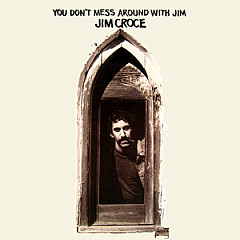
Time In A BottleJim Croce
Jim Croce was killed in a plane crash on September 30, 1973. A few weeks later, his song "Time In A Bottle" hit #1.
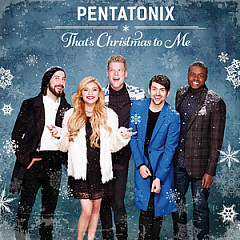
Mary, Did You Know?Pentatonix
The lyrics for "Mary, Did You Know?" were written by Christian singer and comedian Mark Lowry, after his pastor asked him to write a Christmas musical for their church. Southern gospel musician Buddy Greene later added music to his words.
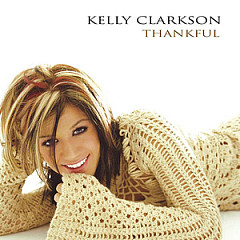
A Moment Like ThisKelly Clarkson
Kelly Clarkson says someone would have to be dying in front of her before she ever sings "A Moment Like This" again.
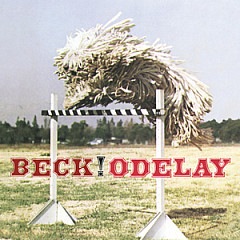
Where It's AtBeck
The sample in Beck's song "Where It's At" that says "What about those who swing both ways: AC-DC" came from a 1969 sex-ed album for middle schoolers.
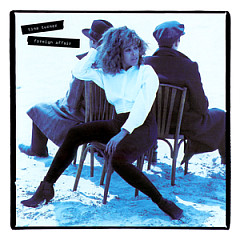
The BestTina Turner
"The Best" by Tina Turner was originally recorded by Bonnie Tyler; Turner's hit version added a bridge and a saxophone solo by Edgar Winter.
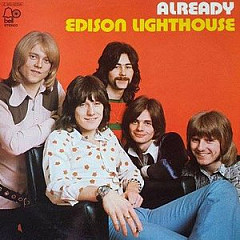
Love Grows (Where My Rosemary Goes)Edison Lighthouse
The love is growing in the '70s hit "Love Grows (Where My Rosemary Goes)" because rosemary is the name of an herb.
Editor's Picks
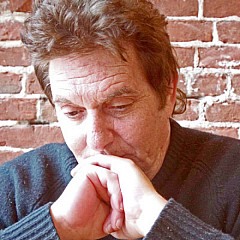
P.F. SloanSongwriter Interviews
P.F. was a teenager writing hits and playing on tracks for Jan & Dean when he wrote a #1 hit that got him blackballed.
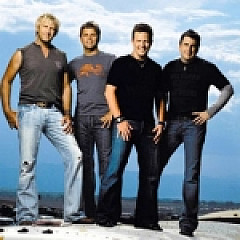
Richie McDonald of LonestarSongwriter Interviews
Richie talks about the impact of "Amazed," and how his 4-year-old son inspired another Lonestar hit.
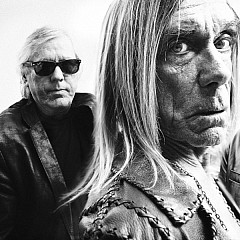
James Williamson of Iggy & the StoogesSongwriter Interviews
The Stooges guitarist (and producer of the Kill City album) talks about those early recordings and what really happened with David Bowie.
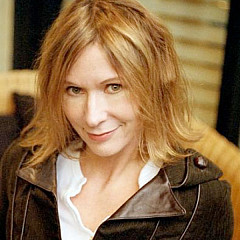
Sam PhillipsSongwriter Interviews
Collaborating with T Bone Burnett, Leslie Phillips changed her name and left her Christian label behind - Robert Plant, who recorded one of her songs on Raising Sand, is a fan.
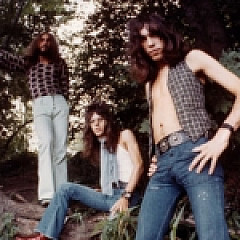
Richie Wise (Kiss producer, Dust)Songwriter Interviews
Richie talks about producing the first two Kiss albums, recording "Brother Louie," and the newfound appreciation of his rock band, Dust.
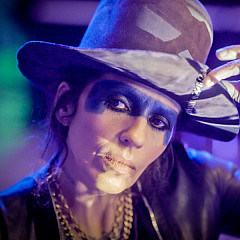
Linda PerrySongwriter Interviews
Songwriting Hall of Famer Linda Perry talks about her songs "What's Up" and "Beautiful," her songwriting process, and her move into film music.

